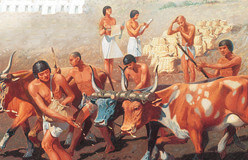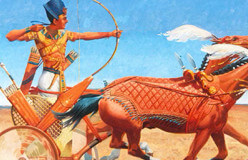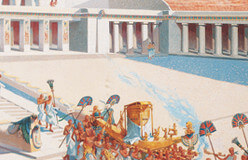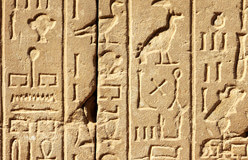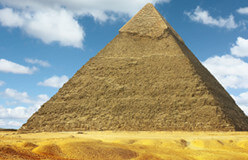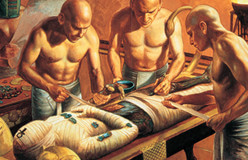The Egyptian religion was one of the first to stress life after death. To get to the afterlife, a dead person needed his or her body. If it was properly preserved, the spirit would reenter it and bring it to life in the next world.
To make sure the spirit could find and recognize the body, the Egyptians invented mummification. Turning a body into a mummy cost a lot and took a long time. So it was usually done only for pharaohs and members of the highest social classes. But even those who couldn’t afford a mummy makeover hoped to go to the afterlife. They thought it was a place much like Egypt, except that the dead lived forever.
